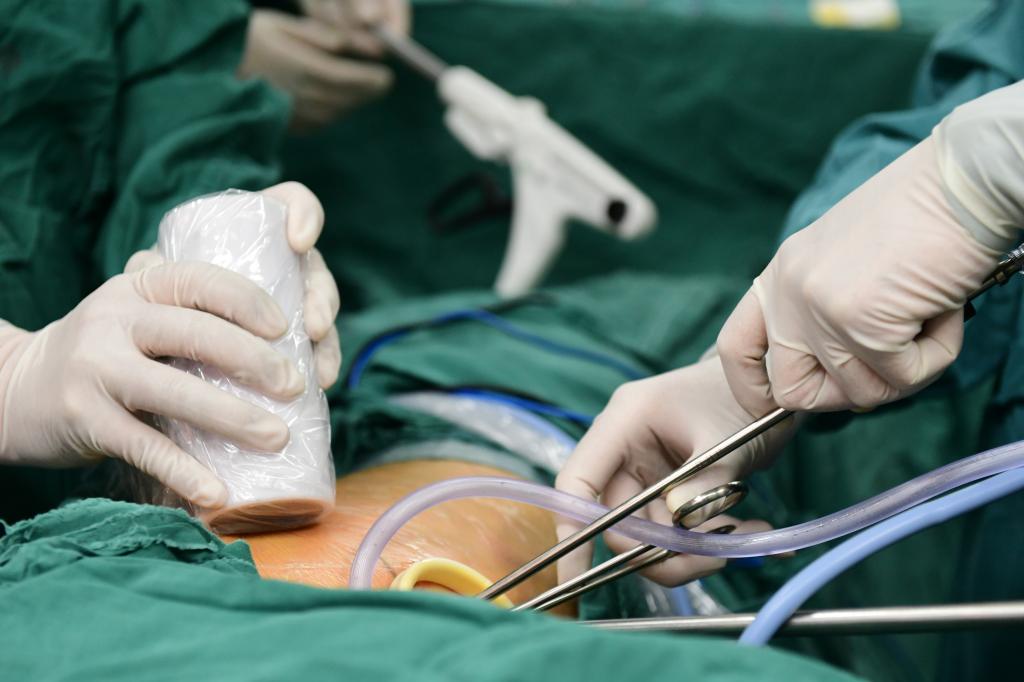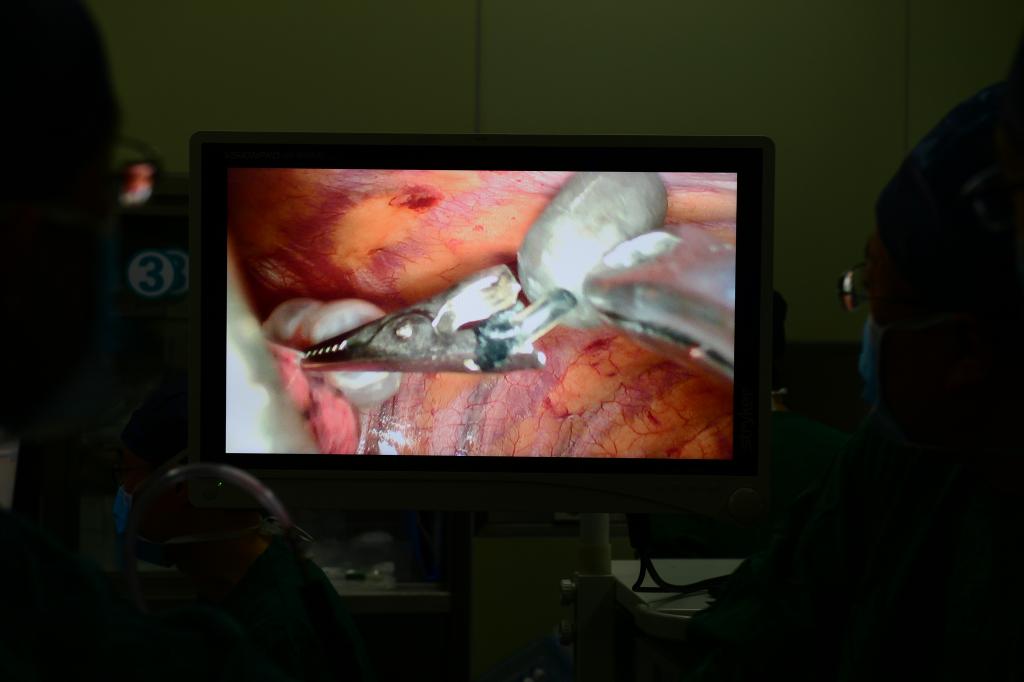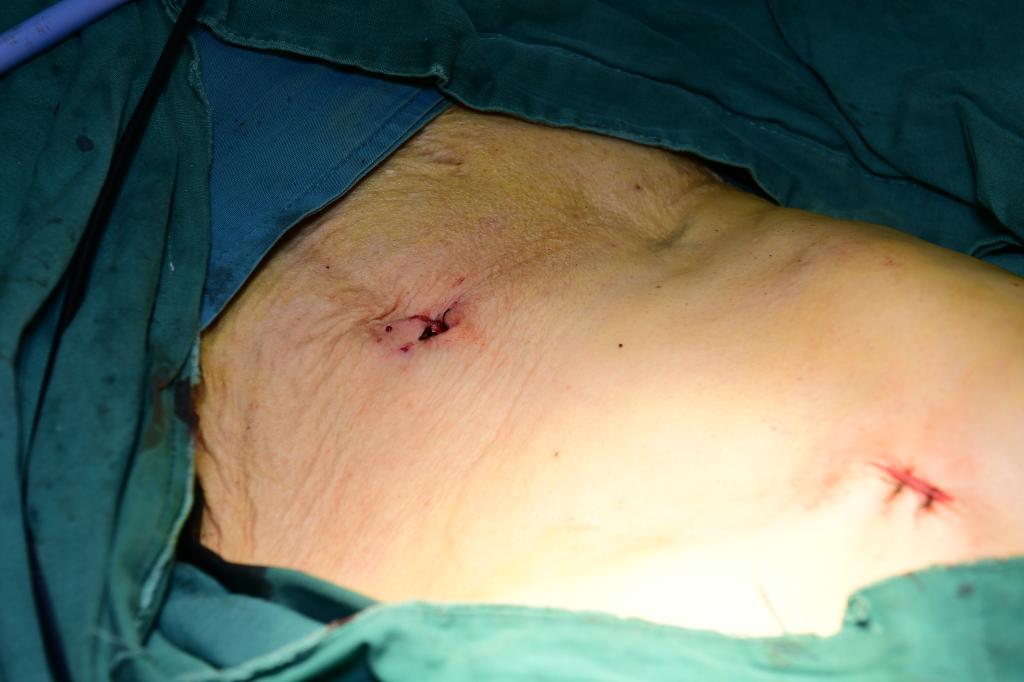On March 26, Associate Professor Zhang Yong from Department of Thoracic Surgery and his teammates carried out the first case of magnetic anchor-assisted thoracoscopic lung wedge resection in China under the instructions of the magnetic surgery team led by Professor Lyu Yi, a prestigious surgical expert in China from Department of Hepatobiliary Surgery of the First Affiliated Hospital of Xi' an Jiaotong University. The magnetic anchor technology can be adopted to reduce 2- or 3-port surgery by most hospitals to single-port surgery and minimize the size of surgical incision during single-port surgery. More importantly, it can reduce mutual interference between surgical instruments, alleviate the trauma of patients and improve the aesthetic appearance of surgical scars on body surface. As far as we know, it is the first time that this technology is applied in clinical practice in China.
With the development of minimally invasive surgery, endoscopic surgery has been widely recognized and accepted by a majority of patients due to mild trauma and quick recovery. However, even if it is a minimally invasive surgery, 3 or more incisions have to be created on the chest/abdominal wall of patients. One more incision is indicative of more trauma. Magnetic force can be utilized to replace certain ports merely with auxiliary function, such as traction and exposure, which can not only avoid creating excessive incisions on body surface, but also realize multi-directional flexible traction and exposure. Besides, it can avert the "chopstick effect" during single-hole endoscopic surgery, make it more convenient to deliver surgical exposure and facilitate the endoscopic operation of surgeons. This is exactly the goal of the innovative magnetic surgery team led by Professor Lyu Yi.
After years of basic and animal researches, National and Local Joint Engineering Research Center for Precision Surgery and Regenerative Medicine and the magnetic surgical team of Department of Hepatobiliary Surgery have developed a series of magnetic traction devices to substitute the function of auxiliary incisions in endoscopic surgery. First, the magnetic anchoring device is inserted into the body through the port and fixed to the target tissues. According to the principle of mutual attraction between magnet poles, the movement of the magnet inserted into the body can be regulated by the magnet outside the body, thereby achieving the procedures of exposure and traction. By using this technique, conventional 3-port laparoscopic cholecystectomy can be completed with only 2 ports, and complicated lobectomy and segmental resection can be performed by using 1-2 ports. During laparoscopic hepatectomy, it is required to stably lift the liver for dissection. Magnetic traction can not only reduce the number of ports on abdominal wall, but also offer stable exposure of the surgical field, which makes the operation more smooth. In the future, magnetic traction will be applied in all endoscopic surgeries to mitigate surgical trauma and promote rapid recovery.
Up to now, under the guidance of the magnetic surgery team led by Professor Lyu Yi, Department of Thoracic Surgery and Department of Hepatobiliary Surgery have successively pioneered 8 cases of minimally invasive endoscopic surgery with magnetic traction, including 3 cases of magnetic anchor-assisted thoracoscopic lung wedge resection by Associate Professor Zhang Yong from Department of Thoracic Surgery, 4 cases of magnetic anchor-assisted laparoscopic cholecystectomy by Associate Professor Zhang Xiaogang, Associate Professor Bai Jigang and Attending Physician Li Yu from Department of Hepatobiliary Surgery and 1 case of magnetic anchor-assisted laparoscopic hepatectomy of liver cancer by Professor Liu Xuemin, respectively. This magnetic traction technology in our hospital takes the leading position worldwide.
The magnetic surgery team led by Professor Lyu in our hospital is the first and unique center for systematic research on magnetic surgery in China. National and Local Joint Engineering Research Center for Precision Surgery and Regenerative Medicine and the magnetic surgical team of Department of Hepatobiliary Surgery have been devoted to the exploration and practice in this field for over 10 years. Previously, they applied the technology of magnetic compression anastomosis into the anastomosis of biliary tract, pancreatic duct and small intestine during the clinical hepatobiliary surgery, which significantly reduced the incidence rate of postoperative complications almost to zero after the reconstruction of biliary and pancreatic digestive tract. Endoscopic biliary anastomosis recanalization and choledochoduodenal anastomosis can avoid the pain of reoperation. The successful application of magnetic anchoring traction devices in clinical practice realizes the concept of ultra-minimally invasive treatment, demonstrating the surgical strength of our hospital as one of the top hospitals in China.

Principle of magnetic traction

Magnetic traction between the magnets outside and inside chest wall

Magnetic anchor fixed to the pulmonary diseased tissues within thoracic cavity

Cholecystectomy is performed via two small incisions on abdominal wall